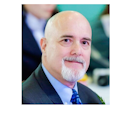If the school year has not already ended, it is about to end soon. And what follows is a period for intensive restorative and deep cleaning. Thus, this is an opportunity to begin a green cleaning program or update an existing one.
Before beginning, schools and universities should develop a strategy that, for ease and appropriateness, should be built around one of the existing “roadmaps” that cover green cleaning. These include the U.S. Green Building Council's LEED for Existing Buildings: Operations & Maintenance Rating System or the Healthy Schools Campaign's Quick & Easy Guide to Green Cleaning in Schools. In addition, maintenance managers should check if their states have enacted Green Cleaning in Schools legislation.
These roadmaps make it easy to work with procurement experts and vendors to identify appropriate specifications that will help schools and universities upgrade procurement documents (bid specs). These roadmaps do not mention products by brands; they use independent, third-party certification programs that clearly identify the minimum health, environmental and performance requirements of products, and that validate the manufacturers' promises.
These roadmaps for chemical cleaners include:
-
All-purpose, glass, non-disinfectant washroom and carpet cleaners: The Environmental Protection Agency's (EPA) Design for the Environment Program (DfE) certified after December 1, 2009; TerraChoice's Ecologo Program CCD-146 and CCD-148; and Green Seal's GS-37.
-
Hard-floor-care products: EPA's Design for the Environment Program (DfE) certified after December 1, 2009; TerraChoice's Ecologo Program CCD-147; and Green Seal GS-40.
For other chemical products, define green as “products that reduce the health and environmental impacts compared with similar products used for the same purpose.” Accordingly, it is preferable to use more highly concentrated products with dispensing equipment. This reduces the environmental impacts from packaging materials and transportation.
To reduce the risk of burning eyes and skin from contact with chemicals, schools and universities should use products that are more moderate in pH. It also is preferable to use products that are lower in volatile organic compounds (VOCs). VOCs may cause respiratory irritation or trigger asthma and may contribute to smog when exhausted outdoors. Look for products that use less water or energy, such as those that clean with cold water.
Try some innovations. For example, manufacturers of floor pads now offer options that will mechanically remove (strip) floor finish using just an all-purpose cleaner. This eliminates the need for floor-stripping chemicals — hazardous products that have the potential to burn skin or permanently damage eyes.
Chemical-free technology, which uses electricity to electrolyze tap water, can be an effective cleaning solution. This technology eliminates the environmental impacts from extracting the raw materials for the basic chemical ingredients; the impacts from combining those ingredients into cleaning chemicals; the impacts from the plastic bottles, caps, labels and cardboard boxes that the chemicals must be shipped in; as well as all the transportation impacts throughout the supply chain. The application of this technology, which has been around for more than 50 years, now is being installed in floor-scrubbing and carpet-cleaning equipment.
And recently, handheld devices that can be used for spray-and-wipe cleaning applications have entered the market.
So begin your summer greening today — it's probably easier than you think.
Ashkin is executive director of the Green Cleaning Network, a 501(c)3 not-for-profit educational organization. [email protected]
About the Author

Stephen Ashkin
Executive Director
Ashkin operates the Green Cleaning Network, a 501(c)3 not-for-profit educational organization.